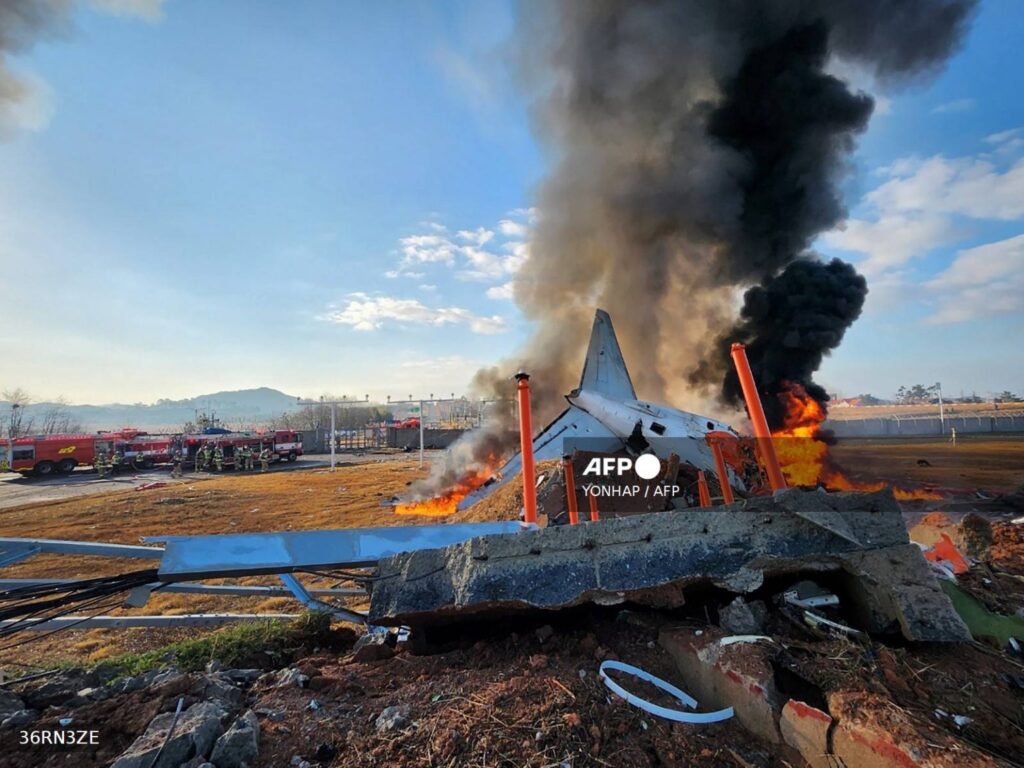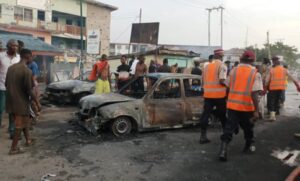Following a plane crash, South Korea examines its fleet of B737-800s

Following the death of 179 people on board a Jeju Air plane that crashed and burst into flames, South Korea ordered Monday a “comprehensive inspection” of all Boeing 737-800 aircraft operated by the nation’s carriers. US air safety officials and employees of the troubled aircraft manufacturer Boeing were arriving to join investigators looking into the worst air disaster on South Korean soil, which officials initially attributed to a collision with birds. The Boeing 737-800 was transporting 181 people from Thailand to South Korea when it made a mayday call, belly-landing before crashing into a barrier and exploding into flames, killing everyone on board Jeju Air Flight 2216, with the exception of two flight attendants who were recovered from the wreckage.
Flags were flown at half-mast at the start of South Korea’s seven-day mourning period, and the acting president flew to the crash site in southwestern Muan for a memorial.
The government is making “every effort” to identify fatalities and assist grieving relatives, according to Acting President Choi Sang-mok, who took office on Friday.
A “thorough investigation into the cause of the accident” would be carried out, according to Choi, an unelected administrator who took over as president in the wake of the impeachment of his two predecessors.
In order to stop future aviation mishaps, he added, South Korea would carry out “an urgent safety inspection of the overall aircraft operation system.”
Both the flight data recorder and the cockpit voice recorder from Flight 2216 are black boxes, and South Korea has a strong aviation safety record. voice recorder — have been found.
Officials have identified 146 victims so far using DNA analysis or fingerprint collection, said Joo.
Airport Tragedy: Families and Experts React
Families Await News
Victims’ families camped overnight in special tents set up in the airport lounge after a long, painful day waiting for news about their loved ones.
“I had a son on board that plane,” said an elderly man in the airport lounge, who asked to remain unnamed, as his son’s body had not yet been identified.
Memorial
At the crash site early Monday, a middle-aged man and woman stood by the fence, gazing at the remnants of the plane—seats, gates, and twisted metal parts—scattered across the field near the charred tail. The smell of blood lingered in the air.
Soldiers carefully combed through a field of reeds next to the runway, seemingly searching for body parts.
Authorities reported that the passengers, aged three to 78, were all Korean except for two Thais.
Jeju Air Apology
Low-cost carrier Jeju Air issued a “sincere” apology, with top officials bowing deeply at a news conference in Seoul. The airline revealed that another Jeju Air flight using the same model aircraft experienced a landing gear malfunction and was forced to return to Seoul’s Gimpo International Airport shortly after takeoff on Monday.
Growing Criticism
Experts analyzing dramatic video footage of Flight 2216’s landing have increasingly criticized whether airport construction played a role. Kim Kwang-il, professor of Aeronautical Science at Silla University and a former pilot, expressed his distress upon reviewing a video showing the plane making a skilled emergency landing but then hitting a wall.
“There shouldn’t have been a solid structure in that area at all,” he told AFP. “Normally, at the end of a runway, there’s no such solid obstruction—it’s against international aviation safety standards. The structure in question caused the aircraft to crash and catch fire.”
“Outside the airport, there are usually just fences which are soft and wouldn’t cause significant damage. The plane could have skidded further and stopped naturally. The unnecessary structure is highly regrettable.”




